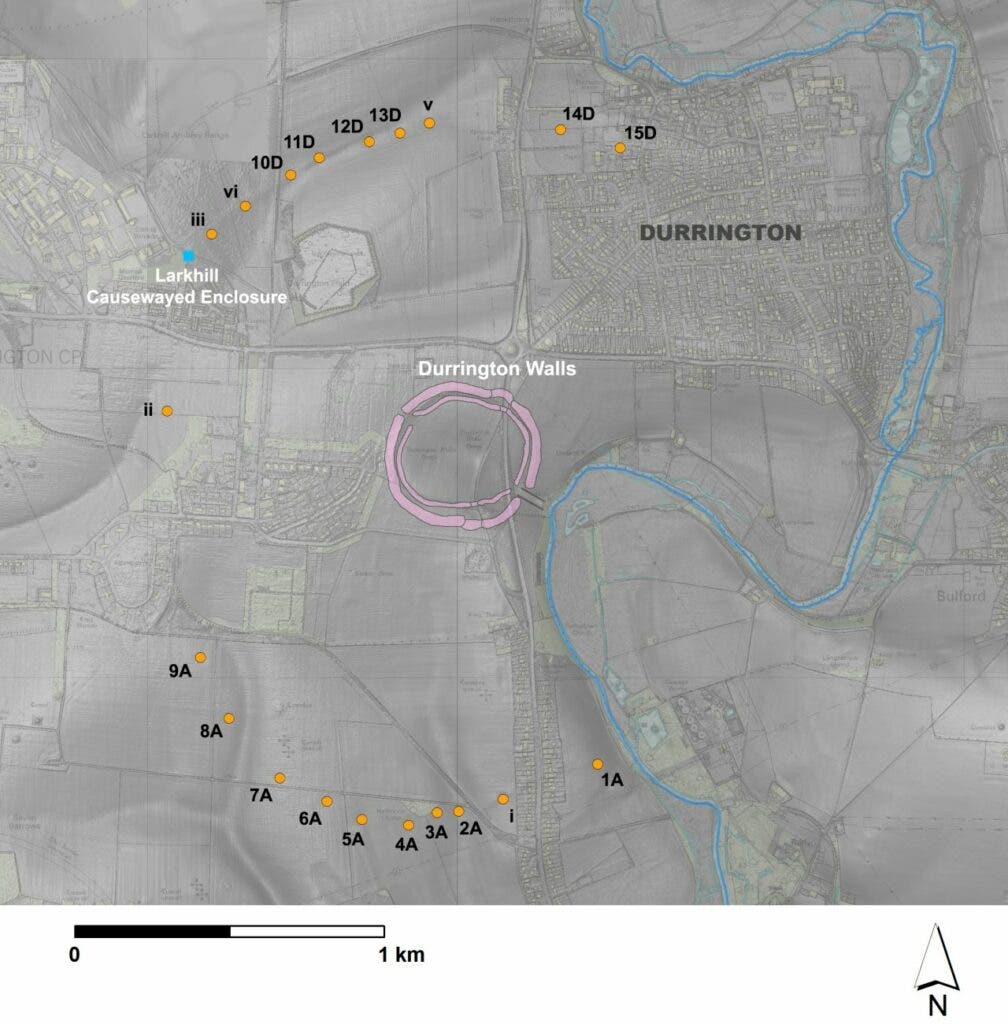In archeology, sometimes you can teach an old site new tricks, it seems. New research reports the discovery of at least 20 huge shafts forming a circle at Durrington Walls, the site of a stone-age village about 2 kilometers (1.2 miles) from Stonehenge.

Image credits Vincent Gaffney et al., (2020), intarch.
The discovery of this major, buried monument could help us better understand how the iconic stone circle in England came to be, or what its purpose was.
Ancient digs
“The size of the shafts and circuit surrounding Durrington Walls is currently unique,” says Vince Gaffney, an archaeologist at the University of Bradford and corresponding author of the paper describing the findings.
“It demonstrates the significance of Durrington Walls Henge, the complexity of the monumental structures within the Stonehenge landscape, and the capacity and desire of Neolithic communities to record their cosmological belief systems in ways, and at a scale, that we had never previously anticipated.”
When the shafts were first found, the team assumed they were natural structures, formed by water flowing through the chalky subsurface. However, remote sensing and sampling quickly showed that this wasn’t the case, and that the shafts were built by human hands.
Researchers say the shafts appear to have been dug around 4,500 years ago. Exactly what their purpose was remains unclear, but the team suspects they served a religious purpose, for example acting as a boundary around a circular monument known as the Durrington Walls henge.
The shafts are, on average, 864 metres from Durrington Walls henge, forming a circle around 2 kilometers in diameter. They are over 10 meters (32 feet) in diameter and 5 meters (16 feet) deep. Although 20 have been discovered so far, there are likely more to be found at the site.
“When these pits were first noted it was thought they might be natural features—solution hollows in the chalk,” says Gaffney. But geophysical surveys carried out at the side showed “there was a pattern on a massive scale.”
Britain is a hotbed for archaeology. Stonehenge, built between 3000 B.C. and 1600 B.C., is iconic across much of the world and one of the country’s top tourist attractions, and a feat of engineering during its day — but it’s by no means the country’s only stone circle. These structures are thousands of years old and the reasons why they were built are still poorly understood It was likely a religious or spiritual place, or a means of keeping track of the seasons.
Among the more exciting implications of this finding is that it betrays a relatively advanced understanding of mathematics, without which the ancient builders couldn’t have produced a neat and organized circle on the scale seen here.
The paper “A Massive, Late Neolithic Pit Structure associated with Durrington Walls Henge” has been published in the journal Internet Archaeology.









